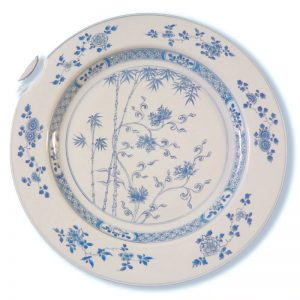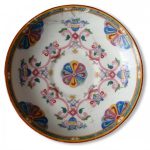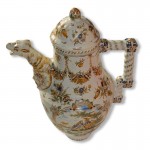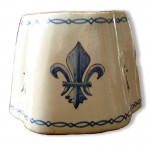Deontology
Ceramic restoration has significantly evolved and respects current deontology criteria. The trend is to intervene as little as possible, and to favour restoration-conservation.
Respect of the objet
Some marks of time attest of the past of the piece and have to be conserved if they don’t degrade the general harmony and aesthetic of the work
Reversibility
Every intervention must be reversible. We exclusively use products and technics without baking
Legibility
The decor must recover its aesthetic unity after restoration. It needs to be easily apprehended.
Levels of restoration
They are three great levels of restoration depending on how much restoration needs to be done.
Intermediate levels can be choosen
Restoration-conservation
Restoration-conversation prevents any future degradation. It’s also called archeological restoration.
Accidents remains visible. The goal is to protect the item without attempting to restore its initial aspect.
Museal restoration
With museal restoration, the physical and aesthetic integrity of the piece is recovered. Despite being discrete and minimalist, it remains visible. It’s an intermediate degree of restauration.
Illusionnist restoration
Illusionnist restoration aims to hide all marks of intervention, ad not to interpret the initial decor. It respects the authenticity of the object. But recent accidents disappear.



